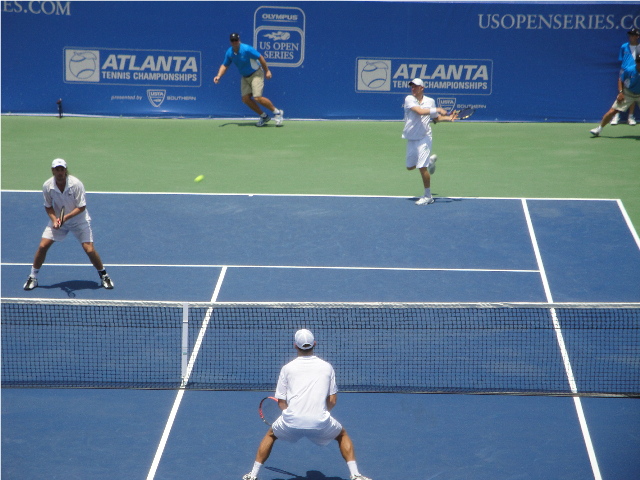Doubles Formations – 1 Up 1 Back, The White Bread Formation
By Kyle Mollison, USPTA
During the month of May, #TennisTipTuesday will consist of a profile of the 4 main doubles formations that you will find or use when playing. First up, 1 Up 1 Back, the white bread formation.
Set Up
The set up is quite simple. The serving or returning player starts back, and their partner is at the net, either in the middle of the service box or behind the service line near the center line (if your partner is serving or returning, respectively). The players will stay in these roles for the duration of the point with the net player shifting up and back, and side to side following the ball.
Benefits
One of the biggest benefits of the conventional 1 up, 1 back formation is that your roles as either a net player or baseliner are pretty well set in stone. What you have to do has probably been drilled into your head by your favorite pro over many drill hours.
The other large benefit of the 1 up 1 back is that it allows for flexibility. The net player can play offensively or more defensively, and same with the deep player.
Drawbacks
The absolute biggest drawback of the 1 Up 1 Back formation is that it is VERY easily attacked by what I call, “shooting the gap”. The lane, or gap, between the deep and net player is the opening between the two players. If the ball goes to the opposing net player, they can easily exploit this gap and hit the ball there, where neither the deep nor the net player can easily make a play at the ball.
The second drawback to 1 Up 1 Back is that is limits your offensive potential. A players offensive potential in doubles is directly related to how close that player is to the net. By holding 1 player back at the baseline the offensive potential of the doubles team is severely limited, with only the net player having any real offensive potential.
When To Use
I call the 1 Up 1 Back formation the white bread formation for good reason – its a pretty good starting point, but isn’t much of anything other than that. For that reason, its the conventional formation and the most popular formation taught across the world. Its balance of offense and defense is perfect for getting warmed up and not putting yourself into too precarious of a situation.
1 Up 1 Back is also a great place to start on the return if the serving team isn’t completely dominating you with their serves or first volleys.
In summation, the 1 Up 1 Back formation is a perfectly serviceable formation (pun not intended) and can bring you successes. However, its limitations can leave it easily exploitable by a dominant opponent, as well as keep a passive opponent in the match. Tune in next week for a DOUBLE edition on the Double Back & Double Up formations!

